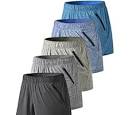A pinched nerve can cause significant discomfort and pain, and its healing process can be frustrating for patients. Understanding the various stages of healing can help alleviate anxiety and provide hope for a swift recovery. This article will outline the different phases of healing for a pinched nerve, from the initial signs to the final stages of recovery.
Acute Phase (1-7 Days)
The acute phase of pinched nerve healing is characterized by the initial symptoms, which include sharp pain, sensitivity to touch, and inflammation. This phase typically resolves within a few days as the body began to repair the damaged tissue. During this time, it is essential to minimize activities that exacerbate the nerve pain, such as excessive neck movements or arm reaching.
Subacute Phase (1-3 Weeks)
As the acute symptoms subside, the subacute phase of pinched nerve healing begins. This phase is marked by a gradual improvement in mobility and a decrease in intensity of pain. Patients may begin to experience a "pins and needles" sensation as the damaged nerve roots begin to heal. The surrounding tissues may still be swollen and tender, so it is important to continue taking anti-inflammatory medication as prescribed by your healthcare provider.
Recovery Phase (3weeks to several months)
The recovery phase of pinched nerve healing is a slow and steady progression toward complete recovery. During this phase, you should start to see improvements in sensation, strength, and range of motion. The pain may still be present, but it should be less frequent and less intense. It is common to experience muscle spasms and discomfort during this phase, but these should subside as the nerve heals.
Sign of Healing
There are several signs that a pinched nerve may be healing, including:
- Decreased pain: As the nerve heals, the intensity of pain may decrease, allowing for periods of relief throughout the day.
- Regained mobility: As the muscles surrounding the pinched nerve recover, it may become easier to move the affected area without pain.
- Reduced swelling: Swelling may persist for several weeks as the body attempts to repair the damaged tissue, but it should progressively decrease as healing progresses.
- Return of sensation: You may start to experience a return of sensation in the affected area, such as feeling heat, cold, or pain.
- Strengthened muscles: Strengthening the affected muscles can help support the pinched nerve and reduce the risk of further nerve irritation.
- Itching: Some patients may experience itching as the nerve heals, which can be addressed with antihistamines.
##Healing from a pinched nerve can be a long and arduous process, but with proper care and understanding of the healing process, patients can expect to see significant improvements in their symptoms. It is essential to follow the guidance of healthcare providers throughout the healing process and to seek medical attention if symptoms worsen or do not improve. With patience and persistence, most pinched nerves will heal completely, allowing patients to return to their normal lives with reduced pain and discomfort.









